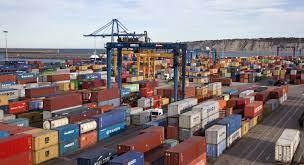Analysis Of Seaport Safety In Nigeria: Case Of Apapa Port Complex Lagos
Main Article Content
Abstract
The aim of this study is to assess the seaport operational safety of Apapa port Lagos. Primary data were collected using survey for the analysis. The study utilized Logit model and Multi-Criteria Decision Analysis to analyse the data collected from` the seaport. In running the analysis, SPSS software version 24.0 was used to analyse the data. The result from the Logit model shows that there is a high significant relationship between the dependent and independent variables tested in the study. This means that there is need for improvement in the area of safety at the port. Furthermore, the multi-criteria decision analysis result also shows various sections and their corresponding weights and ranks with a level of improvement that will be help to step up or enhance the safety variables during port operation. The study recommends that the seaport should be carrying out constant safety study from time to time to increase the safety and security levels of the seaport as recommended by the IMO
Downloads
Article Details

This work is licensed under a Creative Commons Attribution 4.0 International License.
References
Hlali, A., & Hammami, S. (2107). Seaport Concept and Science characteristics: Theoretical Test,n The Open Transportation Journal 11 (1), 120 -129.
Nwaogbe, O.R., Muhammed, A.L., Omoke, V., Ojekunle, J.A., & Ogbuji, C. E. (2020). Overall Service Quality of Nigeria Seaport: Case of Nigeria Hub Port Apapa Port Complex, Lasu Journal of transport, 2 (1), 47 -77.
Parasuraman, A. P, Zeithaml, V. A. & Berry, L. L. Servqua: A mu;tiple Item scale for measuring Consumer perception of service quality. Journal of Retailing, 64,(1), 12-40.
Hyuck, S. C. (2018). Maritime Risk in Seaport operation: A cross country empirical analysis with theoretical foundation, Asian Journasl of Shipping and Logistics 34 (3), 240-248
Paul, Z. I. (2014). An assessment of the impact of terminal operation on port safety, Project submitted to Federal University of Technology, Minna, Nigeria.
Usman, F. A. (2020). Occupational safety and health in the maritime industry: a case Occupational safety and health in the maritime industry: a case study of Nigerian Ports Authority (NPA), A Dissertation submitted to World Maritime University World Maritime University.
Alyami, H., Lee, P. T. Yang, Z., Riahi, R., Bonsall, S & Wang, J. (2014). An advanced risk analysis approach for container port safety evaluation, Maritime Policy & Management 41 (7), 634-650 DOI:10.1080/03088839.2014.960498.
Su, E., Lai, K & Yan Pui Lee (2013). An Empirical Study on Risk Responses for Various Operation Risks of Container Terminals in Hong Kong and China. Business, Computer Science, Sixth International Conference on Business Intelligence and Financial Engineering IEE. DO5I:10.1109/BIFE.2013.27.
Jiang, M., Lu, J., Qu, Z., & Yang, Z. (2021): Safety evaluation of the ports along the maritime silk road, Maritime Policy & Management, 48 (4), 1-23 DOI: 10.1080/03.088839.2021.1903598
Tseng, P & Pilcher, N. (2017). Maintaining and researching port safety: a case study of the port of Kaohsiung, European. Transport. Research. Review. 9 (34), 1-11. DOI 10.1007/s12544 017- 0250-z
Khan, R. U., Yin, J., & Mustafa, F., S. (2021). Accident and pollution risk assessment for hazardous cargo in a port environment, PLOS ONE 16 (6), 1-20
Nwaogbe, O. R., Pius, A., Nuhu, L. O., WokiliYakubu, H. (2017). An evaluation of Airport Operation Safety: a case of Nnamdi Azikiwe International Airport (NAIA), The Aviation & Space Journal XVI (1), 2-20.
F. Juniarianto and D. Dwisetiono, “Job Safety Analysis: Identifying Potential Hazards An Effort To Prevent Work Accidents In Ship Replating And Coating Works At PT. Dock And Shipping Surabaya (Persero)”, zonalaut, pp. 13-18, Jul. 2022.
Wanke, P. F., Nwaogbe, O. R., & Chen, Z. (2017). Efficiency in Nigerian Ports: Handling Imprecise Data with a Two-Stage Fuzzy Approach, Maritime Policy and Management (MPM), 44 (8) 1-17 https://doi.org/10.1080/03088839.2017.1410588

